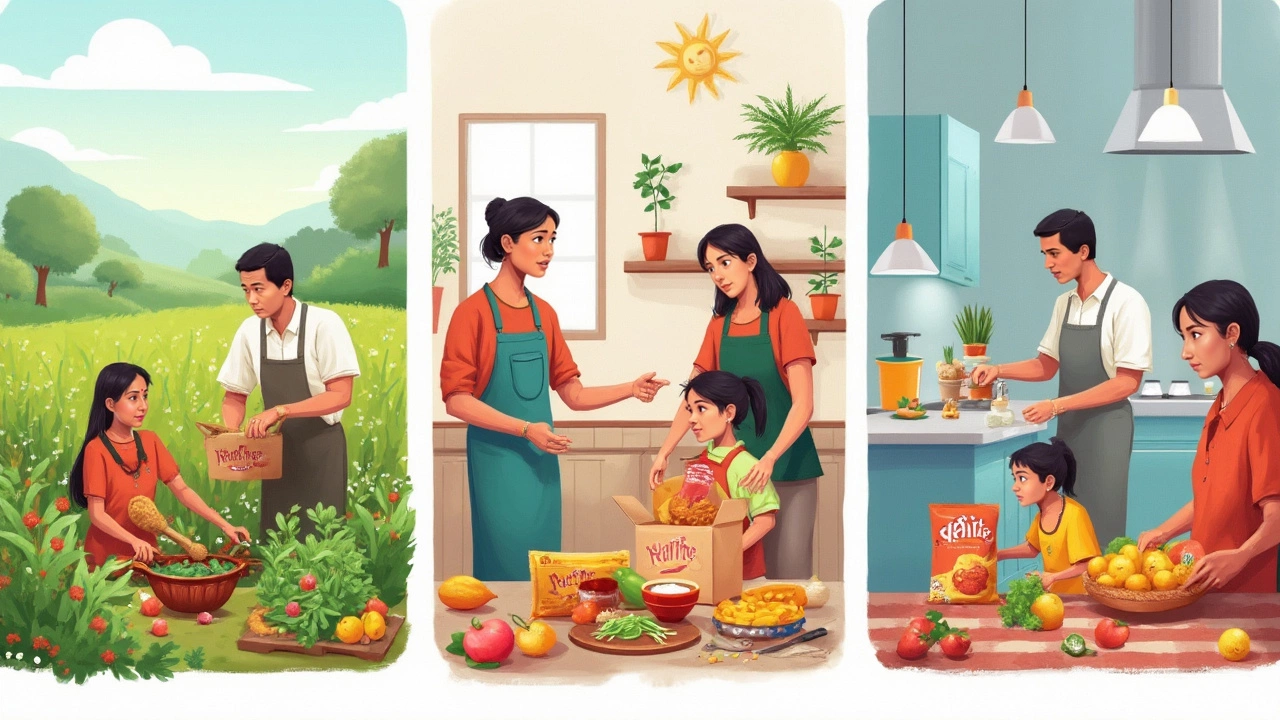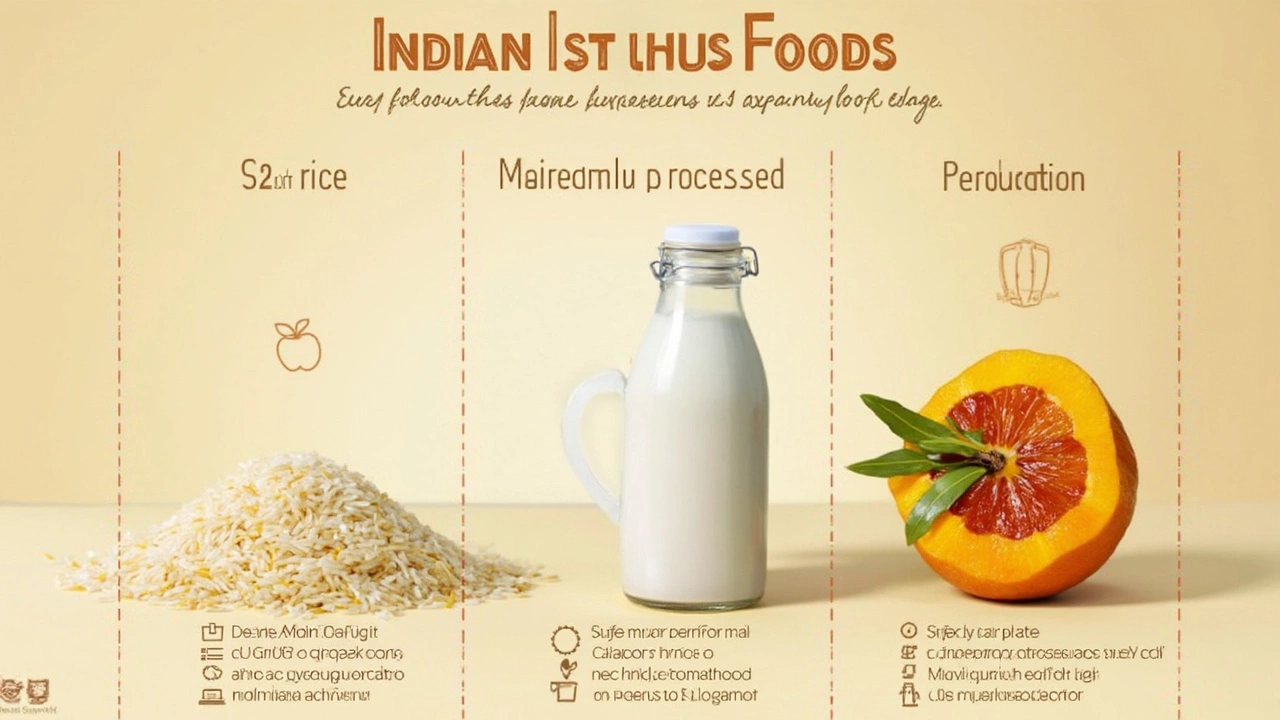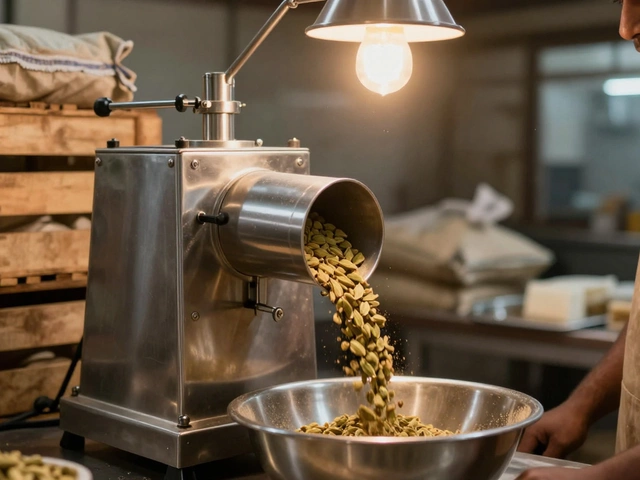Three Major Types of Food Processing: What Sets Them Apart?

When you reach for a loaf of bread, a pack of frozen peas, or instant noodles, you’re dealing with food that’s been through some form of processing. The thing is, food processing isn’t just about adding chemicals or loading food full of sugar. It’s really about transforming raw ingredients into something you can actually eat, store, or enjoy without hassle.
If you think about it, you’ve already done some food processing yourself—like washing veggies or boiling rice. But on a big scale, food moves through a few main types of processing before it hits the shelf. Each type serves a different purpose, whether it’s making food last longer, safer, or just easier to cook after a long day.
Knowing these different types can help you figure out what’s really in your pantry and how a simple tomato turns into the pizza on your plate. Spoiler: not all processed food is the same, and some are a lot better for you than you might guess.
- Why Food Processing Matters
- Primary Processing: Straight from the Source
- Secondary Processing: Food Gets a Makeover
- Tertiary Processing: Convenience at Its Core
- Tips for Making Smarter Food Choices
Why Food Processing Matters
Ever wonder how eggs, milk, or rice make the jump from the farm to your fridge without spoiling? That’s where food processing comes in. It’s the reason you don’t have to visit a farm every day for something to eat. Processing does more than just preserve food—it helps us use seasonal goods year-round, makes food safer, and sometimes even cheaper.
Food safety is a big deal. According to the World Health Organization, unsafe food can cause more than 200 diseases. Proper processing—like flash freezing veggies or pasteurizing milk—knocks out harmful bugs you don’t want anywhere near your meal.
Then there’s convenience. Not everyone has hours to cook soups from scratch or bake bread at home. Thanks to food processing, you can microwave, stir, or simply open and eat. That’s a lifesaver on busy days or when you’re not exactly feeling like a chef.
Here’s a quick look at how processing affects everyday food:
| Food | Processing Step | Main Benefit |
|---|---|---|
| Milk | Pasteurization | Kills bacteria and extends shelf life |
| Rice | Milling | Removes husk, making it edible |
| Bread | Mixing, baking | Transforms raw grains into an easy meal |
| Frozen peas | Washing, blanching, freezing | Freshness preserved for months |
Not all food processing is created equal. Some methods are super gentle and only change the look or taste a bit, while others add stuff like preservatives or sugar. This is why reading labels can help you pick what’s best for your lifestyle.
Primary Processing: Straight from the Source
This is where food processing really kicks off. Primary processing is all about getting raw ingredients ready for people or factories to use. Think of it as the "getting it out of the ground" or "fresh off the farm" phase. It covers everything we do to harvest, clean, and prep crops, meat, and dairy right after they're produced.
For grains like wheat or rice, this means thrashing, milling, and removing husks. Fruits and veggies are washed, peeled, or sorted. Meat and fish are slaughtered, cleaned, and chilled. Milk gets pasteurized to kill off harmful bacteria. It’s the step where food finally becomes safe, edible, and ready for the next level of use.
- Grains: milling, sifting, drying
- Fruit & vegetables: washing, peeling, cutting
- Meat: slaughter, deboning, chilling
- Milk: filtering, pasteurization
You might be surprised that a lot of foods you buy, even if they're labeled as raw or natural, have already gone through some type of food processing here. For example, that bagged lettuce? It's already been cut, washed, and packed to stop spoilage and make your salad nights easier.
Here’s a quick look at how much gets processed worldwide at this stage:
| Food Item | % Typically Primary Processed |
|---|---|
| Wheat | Over 95% |
| Milk | About 90% |
| Poultry | Almost 100% |
The main goal? Boost safety and shelf life without changing the food too much. Not many extras get added at this stage, so it’s the closest you get to natural in the food industry before anything fancy happens. If you're into making bread at home, the flour you use has already gone through primary processing just to get it clean, safe, and ready for baking.

Secondary Processing: Food Gets a Makeover
Here’s where food takes its first big detour from nature. Secondary processing is all about turning those basic farm goods into the foods you actually recognize and want to eat. Think wheat becoming bread, milk changing into cheese, or raw chicken ending up as nuggets. It’s basically a makeover: the raw stuff gets combined, cooked, and sometimes seasoned or fermented into something tastier and easier to use.
The main difference from the first stage? Here, different ingredients come together, sometimes with a bit of science and skill, to make foods everyone knows from the store. Take a look at some of the most common examples:
- Bread from wheat flour: The wheat is milled, then mixed with water, yeast, and salt, and baked. That’s how you get a loaf ready for sandwiches.
- Cheese from milk: Bacteria and rennet are added to milk; it gets curdled, pressed, and aged. Different steps create everything from mozzarella to cheddar.
- Pasta from semolina: The semolina (processed wheat) gets mixed with water, shaped, and dried. Now you have spaghetti or macaroni for dinner.
- Canned beans: Beans are cleaned, soaked, cooked, and sealed in cans with brine or sauce to sit on your pantry shelf for months.
- Deli meats: Raw meat is seasoned, sometimes cured or cooked, then sliced and packaged for a ready-made lunch.
Secondary processing is where those crazy convenience foods pop up, but not all items here are unhealthy. Some are pantry staples worldwide. What matters is how much added fat, sugar, or preservatives sneak into the process. For example, a homemade loaf of bread is still secondary processed, but it’s not swimming in additives like a packaged fruit pie might be.
If you’re wondering how popular this is, check out the numbers: according to industry surveys, nearly 80% of packaged products in a typical supermarket are secondary processed foods. The big thing to watch? Ingredient lists. Short and understandable usually means fewer surprises.
| Secondary Processed Food | Main Ingredients | Common Additions |
|---|---|---|
| Bread | Wheat flour, water, yeast, salt | Sugar, preservatives |
| Cheese | Milk, bacteria, rennet | Salt, emulsifiers |
| Pasta | Semolina, water | Eggs (sometimes), flavoring |
Want to keep things healthier? Cook basic meals at home or read food labels before tossing items into your cart. Choose secondary processed options with minimal weird ingredients—your body (and taste buds) will thank you.
Tertiary Processing: Convenience at Its Core
If you open a freezer full of ready meals or grab a bag of potato chips, you’re dealing with tertiary processing. The main goal here is to save you time and effort. Basically, foods in this group are fully prepped, cooked, and packaged so you hardly have to do a thing except heat or eat. Think of things like instant noodles, microwave dinners, sliced bread, and breakfast cereals.
This is the most intense level among the three major types of food processing. Companies add preservatives, stabilizers, flavors, and even colors to make food last longer and look more appealing. These foods have a longer shelf life and are often designed to fit busy lifestyles. It’s not just snack foods—yogurt with fruit already mixed in or cans of soup ready to go both count as tertiary processed foods.
There's a downside, though. Tertiary processed foods can be high in salt, sugar, and unhealthy fats. A detailed study in 2023 found that about 60% of calories in the average Western diet now come from highly processed foods. This shift makes it even more important to check nutrition labels.
| Common Examples | Time to Prepare | Key Additives |
|---|---|---|
| Ready-to-eat meals | 5 minutes (microwave) | Preservatives, flavors |
| Packaged snacks | 0-2 minutes | Salt, sugar, artificial colors |
| Instant soups/noodles | 3-7 minutes | Stabilizers, MSG |
If you want to cut back but still enjoy convenience, try looking for products with fewer ingredients and words you recognize. Simple swaps like frozen plain veggies or unsweetened oats can save you from eating a lot of mystery additives found in typical tertiary processing foods.

Tips for Making Smarter Food Choices
Choosing healthier food isn’t just about avoiding all food processing. The trick is knowing what’s in your cart and picking the options that work for your health and your schedule. Here are some hands-on ways to make better calls when you’re staring down the supermarket aisles:
- Read ingredient lists, not just labels. If you can pronounce most things and your grandma would recognize the ingredients, you’re in good shape. Shorter ingredient lists usually mean less food processing or fewer additives.
- Stick with minimally processed foods when you can. Things like frozen veggies, pre-cut fruit, and unsweetened yogurt pack nutrition and keep meal prep easy. These mostly go through primary processing, so you still get the good stuff.
- Watch out for added sugars and sodium. Highly processed, or tertiary processing, foods like instant noodles, chips, or soda can pack way more sugar and salt than you expect. Always double-check nutrition panels.
- Look for whole grains. If grains are at the top of your list, check if they say “whole” rather than “refined.” Swapping white bread for whole wheat or brown rice makes a real difference.
- Don’t be fooled by health halos. Foods labeled “low-fat” or “natural” don’t always mean healthy. Sometimes, they add extra sugar or weird additives to make up for taste.
Sometimes, convenience wins—no shame in that. Just balance things out and pick your battles. If you rely on ready-to-eat meals or secondary processing products, aim for the versions with more real food and fewer hard-to-pronounce ingredients.
| Type of Food | Avg Salt (per 100g) | Avg Sugar (per 100g) |
|---|---|---|
| Frozen Vegetables | 0.03g | 0.1g |
| Packaged Bread | 0.6g | 4g |
| Instant Noodles | 1.4g | 2g |
| Sugar-Sweetened Soda | 0g | 10g |
As nutritionist Marion Nestle puts it:
“The more you cook, the healthier you are likely to be.”Home-cooked meals let you control what goes in the pot—and into your body.
So, next time you’re shopping, keep these quick tests in mind. You don’t have to be perfect. Just being a little more mindful with food processing steps can make a big difference in how you eat and feel every day.





